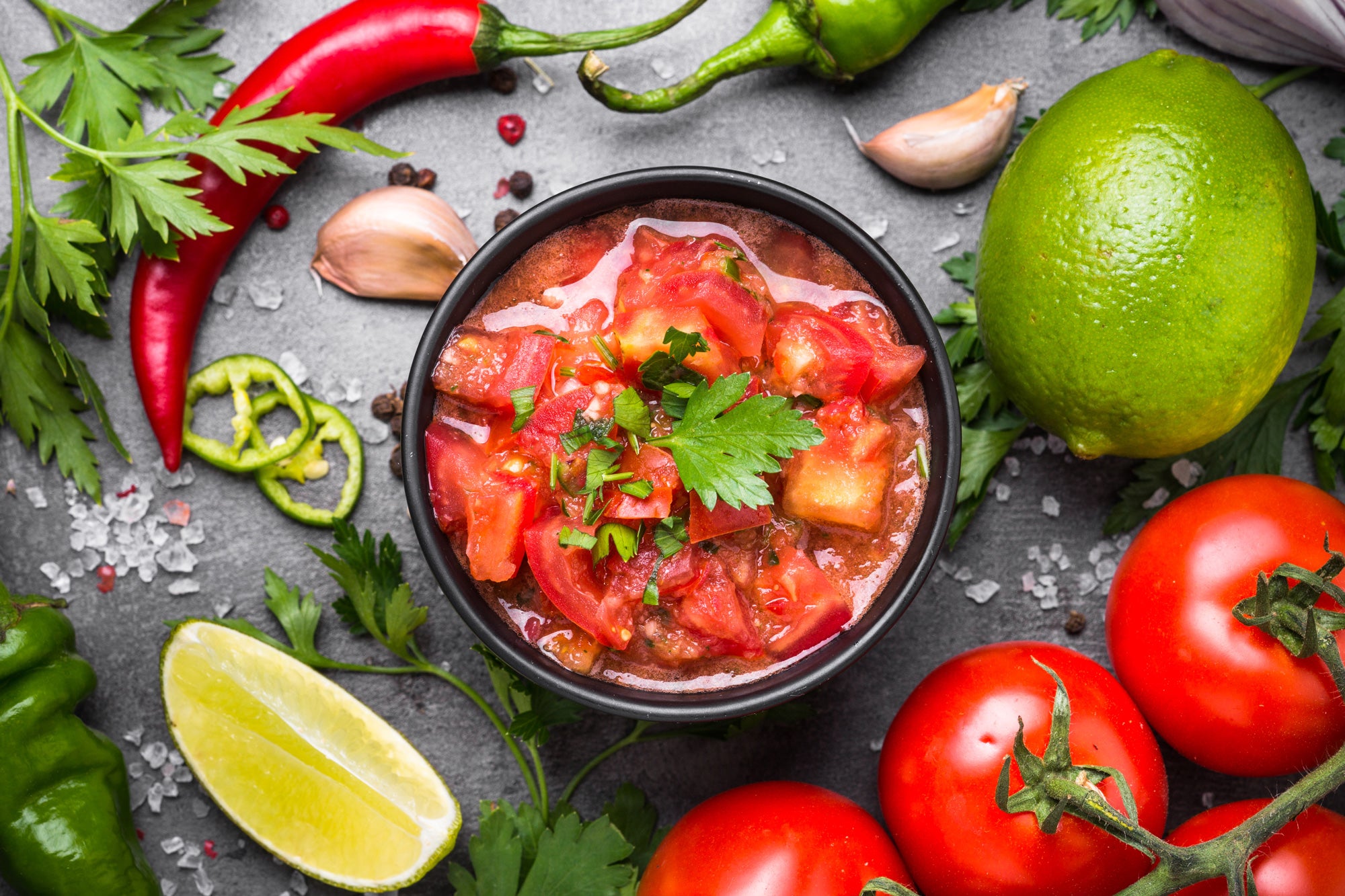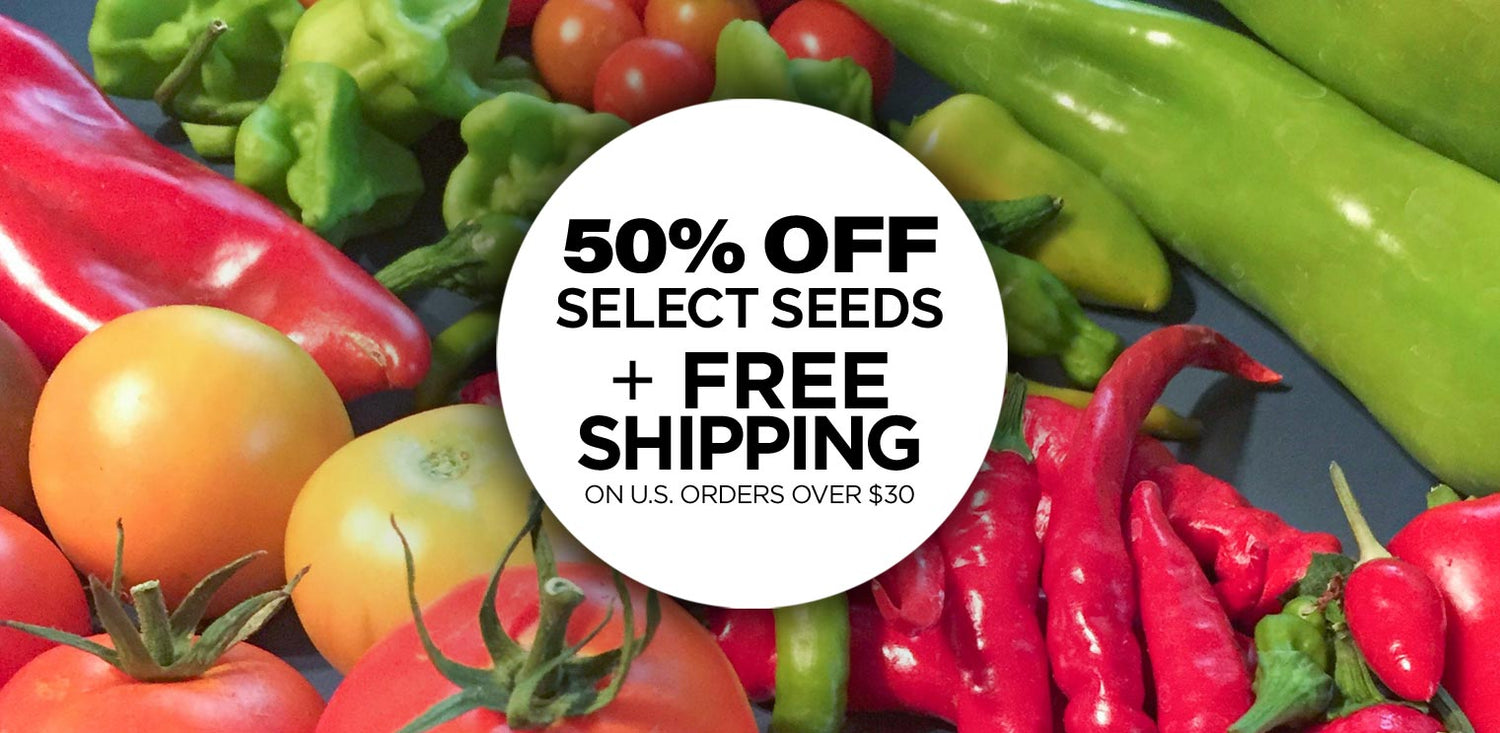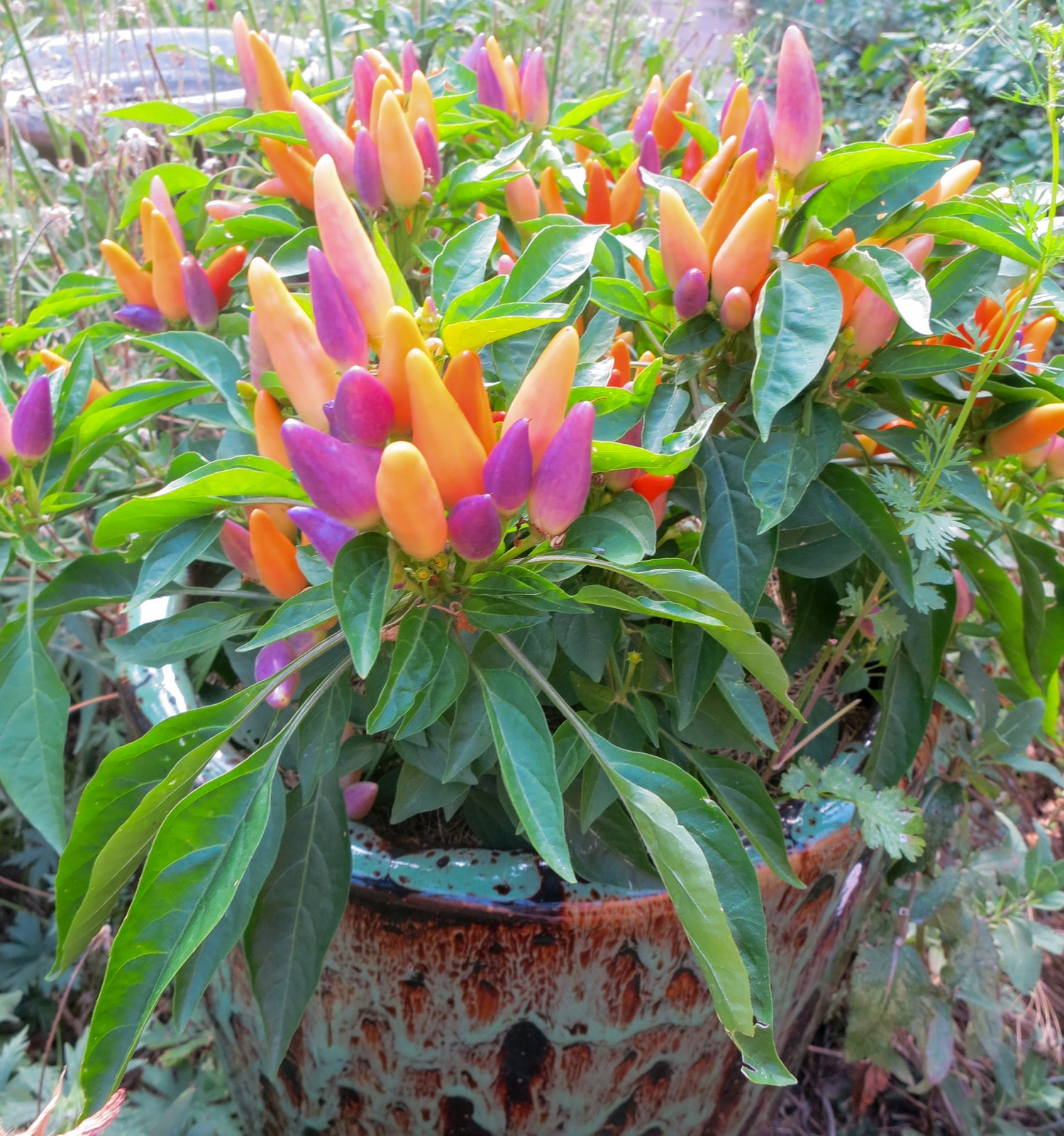
Green pepper seeds can last up to 25 years in perfect conditions, but using the seeds within 2-5 years will give you the best germination rates. The older the seeds get, the less likely they will sprout. Store seeds in a cool, dark, dry environment – and plant them as soon as you can – the more years that go by, the less seeds will germinate, so you'll want to plant more seeds if they get to be more than 3-5 years old to ensure enough germination for the amount of plants you desire.

2. For fastest and most successful germination, keep your pepper seeds consistently warm and moist. The ideal temperature for sprouting is 80-90˚ F. We like to us e a seedling heat mat to keep the temperature warm. Once they sprout, you can pluck out extras and transplant them into their own pods – you only want one sprout per pot/pod.
3. Be patient.
Don't give up your green pepper seeds – peppers take longer than most vegetable seeds to sprout, some of the super hot pepper seeds like Carolina Reaper seeds can take 4-6 weeks to germinate, while fast growing green peppers can sprout in as little as 7-12 days. Keep them warm for the fastest germination!

4. Start Seeds Indoors 6-8 weeks before the last frost date.
Green peppers can only grow in warm weather, so it's good to start them early indoors to get a deep root system going before transplanting outside once the temperatures have warmed up to 50-60˚F at night consistently. If you can transplant them into larger pots to keep growing indoors you'll have bigger plants to plant in the garden ensuring faster harvests. You can even grow peppers year-round indoors if you have a good light setup! Many peppers can live for years if not exposed to frost or freezing temperatures.
One of the most common mistakes we see made with beginner and experienced gardeners alike is overwatering the pepper seedlings. Peppers despise wet, soggy roots. Let the soil dry out between watering for maximum pepper health and growth. Also be sure to use well-draining potting mix, seedling mix is ideal for starting seeds as it drains quickly. If you see droopy yellow leaves on your pepper plants, this is likely that your soil may be soggy, so feel the soil before watering and only water when dry.
6. Air Circulation and Movement are Important for indoor pepper seedlings!
Indoor seedlings can quickly die if the air is stagnant and there is no movement. To prevent damping off, a common ailment of seedlings that causes them to wither and die after sprouting, brush the seedlings daily with your hands or put a small fan on them. The movement and air circulation will help them grow stronger stems, not be as leggy, and prevent damping off. You'd be surprised, leggy seedlings are not always caused by lack of light, often with grow lights if seedlings do not have any movement or air circulation they get very leggy. So make sure to exercise them by brushing with your hand or giving them a fan! :) Learn more about Weak Pepper Seedlings »
If you pinch off the first blossoms on your small pepper seedlings when they appear, the plants will put more energy into growing larger instead of growing peppers, which will result in a larger harvest later!

8. It is Very Important to Harden Off Pepper Plants before planting outdoors.
If you start green pepper seeds indoors, after it's warmed up enough outside, its good to bring them out at first for a few hours in dappled shade, and then work up to a full day in the sun over a series of days. This will acclimate them to the wind and sun so that they don't wither and suffer from shock. Then you can transplant them into the garden or container after they've gotten used to the sun's rays and strengthen their stems for the breezes. Learn more about Hardening Off Seedlings »
9. Plant in Full Sun!
Peppers don't do well in the shade, make sure they have at least 6-8 hours of sunlight.

10. Don't Overfertilize with Nitrogen:
Peppers do benefit from a regular feeding of a well-balanced, organic fertilizer or compost tea – but once they are larger, avoid high nitrogen fertilizers. Too much nitrogen will create lush foliage, but few blooms and therefore no peppers. Homemade compost is best for peppers!
11. Bring in pollinators with Flowers!
While peppers can self-pollinate with the wind, pollinators such as bumblebees can really help with larger harvest. Invite bees and attract beneficial insects by growing lots of native flowers around your pepper garden. Never use pesticides! Learn more about Pepper Pollination »
12. Harvesting Green Peppers
A lot of peppers are harvested at an immature stage such as the traditional green bell pepper – it's harvested green, even though most varieties will still mature to red, or purple, orange, and yellow. Green chile peppers can be harvested at any stage of growth, but their flavor gets better as they mature. Before picking peppers, we encourage you to pick just one pepper and taste it, if it still tastes green or bitter, let it ripen for another week or so before trying another pepper for the desired ripeness and flavor. The longer it matures on the plant, the more flavor (and sometimes heat) the pepper will have. Chile peppers flavors are also intensified by roasting!
Learn more about When to Pick Peppers »



















